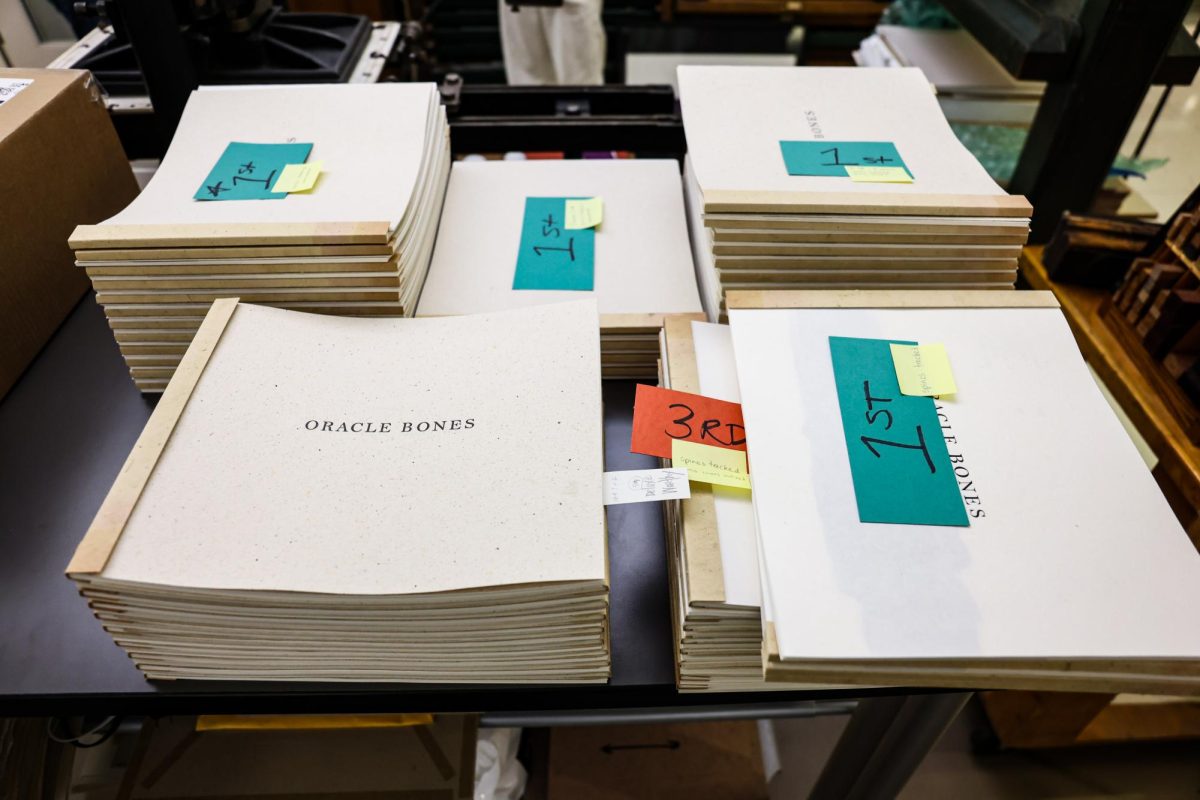The J. Willard Marriott Library hosted a book launch for “Oracle Bones,” a handmade book featuring poems by author Terry Tempest Williams and woodblock prints by artist Gaylord Schanilec.
The book release event in early March featured a panel discussion with Williams and Schanilec, joined by members from the U’s Book Arts Program who worked on “Oracle Bones.”
The panel began with Williams reading a passage from “Oracle Bones.” Williams said she had not read from the book in 10 years.
“I was stunned by how dark it is … I don’t think I would write it now because it’s too true,” she said.
Williams added that the drying up of the Colorado River and Great Salt Lake shows we now live the fears expressed in her poems.
In 2015, Williams and Schanilec went to the desert in southern Utah and gathered juniper and sandstone artifacts. Schanilec then used those natural materials to create printing blocks for the book.
Williams said her time with Schanilec in the desert influenced her writings.
“He noticed every detail … a stone, a piece of bark, the way the water was moving, and on that day I thought, ‘This was a man who understands the essence of things,’ and it shaped those words,” Williams said.
The panel discussed how “Oracle Bones” was a collaborative project, from the text and printing blocks to the book’s design.
Schanilec said Oracle Bones was his career’s first “true” collaboration, and the joint passion is evident in the final product.
Amy Thompson, designer for the Book Arts Program and Red Butte Press, said “Oracle Bones” contains a lot of empty space and some repeating imagery. The negative space was a creative decision.
“I think it’s about the distance that we feel and the space and the solitude that we feel when we are alone in the desert,” Thompson said. “The book just wouldn’t have the same sort of tone if there was more in it.”
The pages themselves also play an artistic role in “Oracle Bones.” The book is made up of two types of paper. The text was printed on Magnani Pescia Paper, and the imagery was printed on Goyu, a Japanese translucent paper.
Marnie Powers-Torrey, master printer and managing director at the Book Arts Program and Red Butte Press, said to read the book’s text, the reader must push their hands down firmly on the page.
“‘Oracle Bones,’ as a tradition, is ancestral voices being invited into a space, and I think that the translucent pages kind of provided a veil or an unveiling of the text, and I think it was a great way to bring the images and text together without having to disturb the open space in the desert,” Powers-Torrey said.
The panel ended by discussing what they want readers to get out of the book.
“The main thing that most of us are after when we’re making a book or painting or writing is just to convey an emotion in such a way that the viewer or the reader feels it, so I think that would be it — to feel all the attention, all the time, and all the thought that was put into the book,” Schanilec said.




